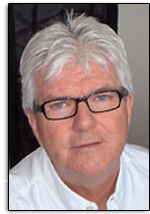This is also the time of year when dozens of cities around the world are hosting auto shows. Manufacturers in abundance are showing off their latest vehicles, not the least of which are hybrids and EVs. Alternative vehicle propulsion technologies are slowly becoming more prominent, driven by a desire to reduce dependence on petroleum and the need to reduce air pollutants and greenhouse gas (GHG) emissions. Alternatives include so-called hybrid vehicles that use a conventional internal combustion engine and an electric motor, as well as a variety of electric vehicles (EVs), such as plug-in hybrid electric vehicles (PHEVs), battery electric vehicles (BEVs) and fuel cell electric vehicles.
The cumulative number of hybrid cars sold worldwide as of early 2013 was about 6.3 million. Between late 1997 and March 2013, Toyota - the leading hybrid manufacturer - sold nearly 5.13 hybrids worldwide, or 81 percent of the global total.
Japan is the world's largest market for hybrids. The United States is second, followed by Europe.
Light-vehicle production for the top ten countries and rest of the globe looks like this: (In millions of units)
| China - 18.2 U.S. - 10.1 Japan - 9.4 Germany - 5.5 South Korea - 4.5 India - 3.8 |
Brazil - 3.2 Mexico - 2.9 Canada - 2.5 Thailand - 2.4 Rest of the world - 19.9 |
A lot of attention was being apportioned to battery electric vehicles, particularly those made by Tesla Motors.
Hydrogen vehicle components comprise:
- A hydrogen tank that stores the fuel under high pressure
- Fuel cell stack to generate electricity from the fuel
- A battery that stores energy from deceleration
- The motor that runs on electricity from the fuel stack and the battery
- The Power Control Unit that manages the fuel cell stack and battery
The hydrogen car, it appeared, had met its demise. But automakers, including General Motors, Honda, Toyota, Daimler, and Hyundai have persisted. After many years and billions of dollars ploughed into research, hydrogen cars have re-surfaced and are turning up in showrooms. Hyundai has the hydrogen-powered Tucson sport utility and Toyota is introducing a sedan called Mirai (which translates as future') in California which will sell for about USD57,000 less than a Tesla.
California is spending millions to build hydrogen fuelling stations, with a view to increasing the existing network from nine to 50 by 2015. Japan and Germany are building a similar number of filling stations.
Fuel cell cars and BEVs at their core reap the advantages of electric motors - fast acceleration because of increased torque, near silence, and zero tailpipe emissions. The difference is where the electricity comes from. Instead of storing their charge in batteries, the fuel cells in hydrogen vehicles are miniature self-contained power plants, generating a flow of electricity in the chemical reaction of combining hydrogen and oxygen into water. The oxygen comes from the air, the hydrogen, which is compressed, is stored in tanks.
Elon Musk of Tesla actually mocks fuel cells calling them fool cells' that will lose out to battery electric cars like his. Battery electrics are more efficient than fuel cells and are cheaper to operate. And there are currently many more places to plug in than there are places to top off a tank of hydrogen. But BEVs have major technological shortcomings as well. They take time to recharge, they do not go as far as hydrogen cars between refuelling, and the batteries required for larger vehicles make building them impractical due to the current lithium-ion batteries simply cannot hold enough joy to take larger vehicles over longer distances.
The U.S. lithium-ion battery manufacturing industry is really still in an early stage of development. Current federal policies to promote electric vehicles include USD2.4 billion in grants to battery makers; USD3.1 billion in loans to automakers; and USD1.8 billion in the form of tax credits to consumers for purchasing electric cars. The Department of Energy (DOE) is backing research into now battery technologies and low-cost manufacturing methods. As I write this, however, the slowdown in demand for electric and hybrid vehicles has negatively affected lithium battery makers, causing insolvency for two of the major DOE grantees, A123 Systems and EnerDel.
Fuel cells are more efficient than internal combustion engines, so fuel-cell cars like the Mirai have a 480-kilomtere (300 miles) range, comparable to present day gasoline-fuelled cars. Unlike the hours it takes to recharge low batteries, filling up at a hydrogen pump takes about as long as filling a tank of gas. Even Tesla superchargers need 20 minutes to give the Model S half a charge.
Building a fuel cell small enough to fit in a car, operate for years in varying weather conditions, and not cost an arm and a leg posed challenges that the carmakers say they have conquered. The cost has also come down by reducing the amount of platinum required. Platinum is used as a catalyst to bring the oxygen and hydrogen together. Also, most hydrogen comes today from stripping hydrogen atoms off natural gas molecules. That produces carbon dioxide as a by-product and undercuts the goal of reducing GHGs.2
Toyota likely will lose money on each Mirai it sells. But the automaker hopes that fuel cell cars will follow the trajectory of the Prius, which evolved from a money-losing oddball to a wee-accepted mainstream offering. According to Nihar Patel, a Toyota executive, If that's an example of a test, we want to repeat that test going forward.
1 Chang, K. "Hydrogen Cars Arrive in Showrooms" The New York Times Weekly International (January 17-18): 8
2 Ibid.





